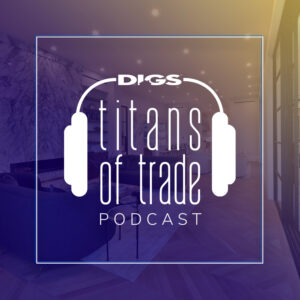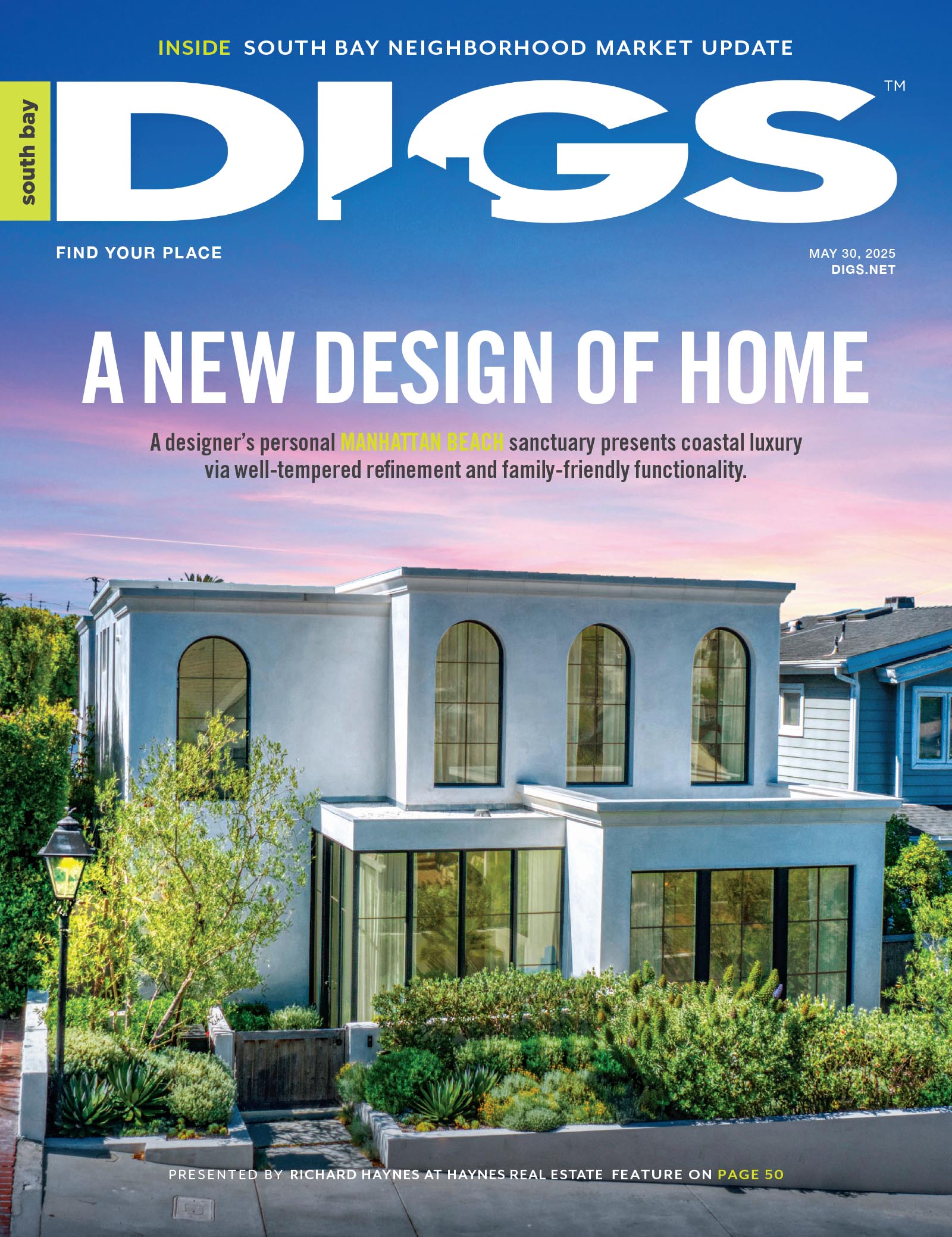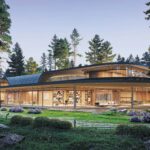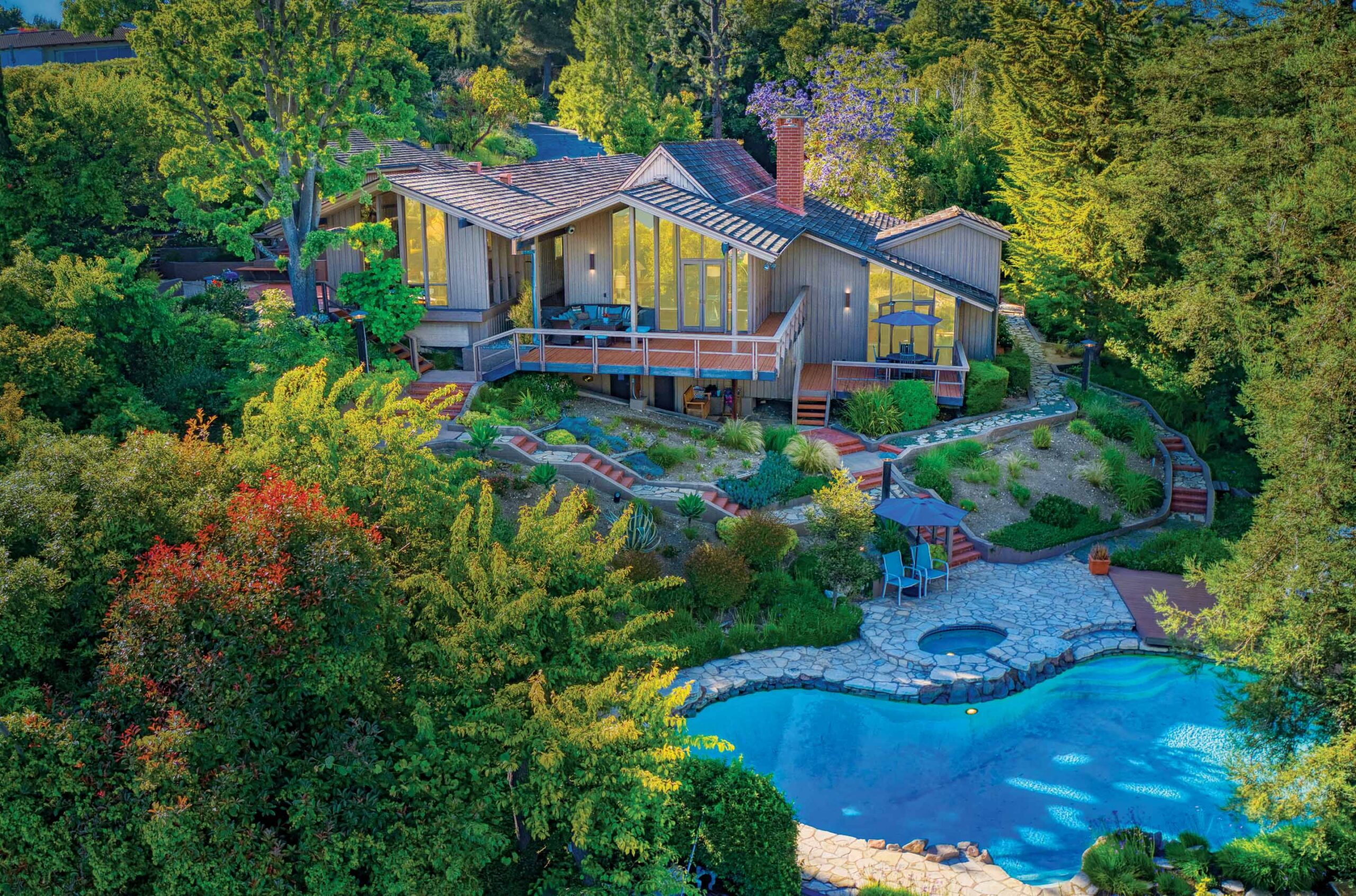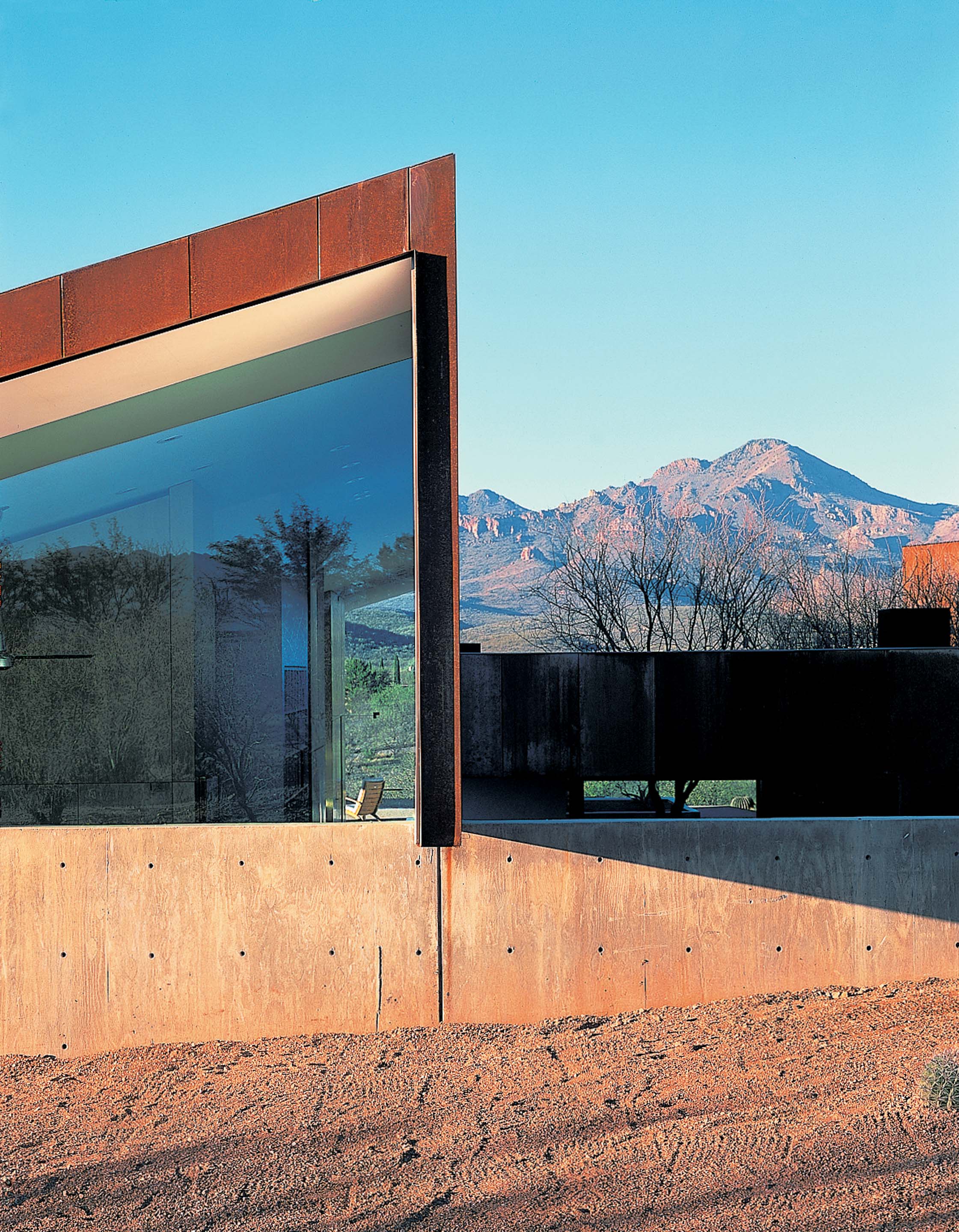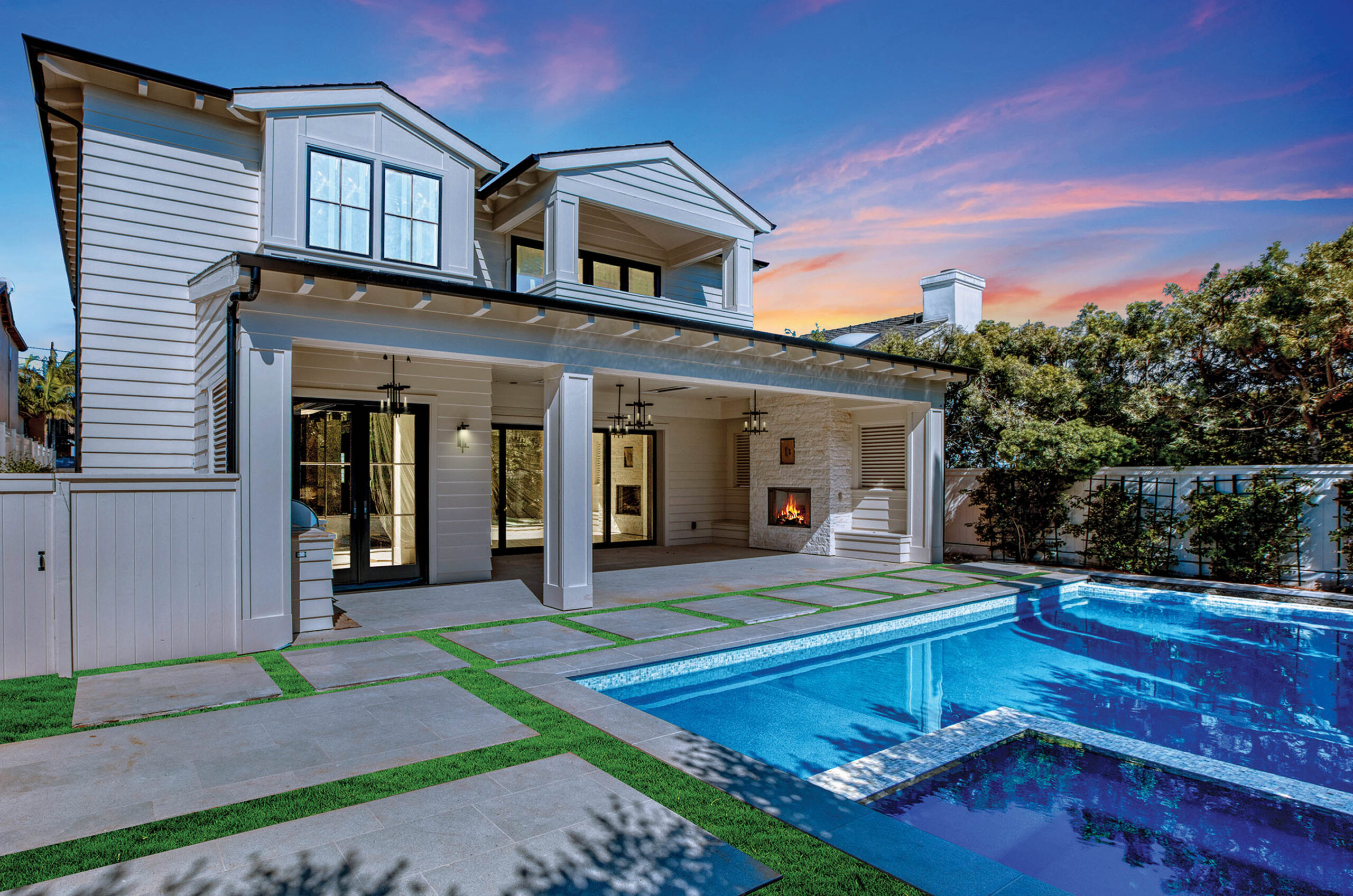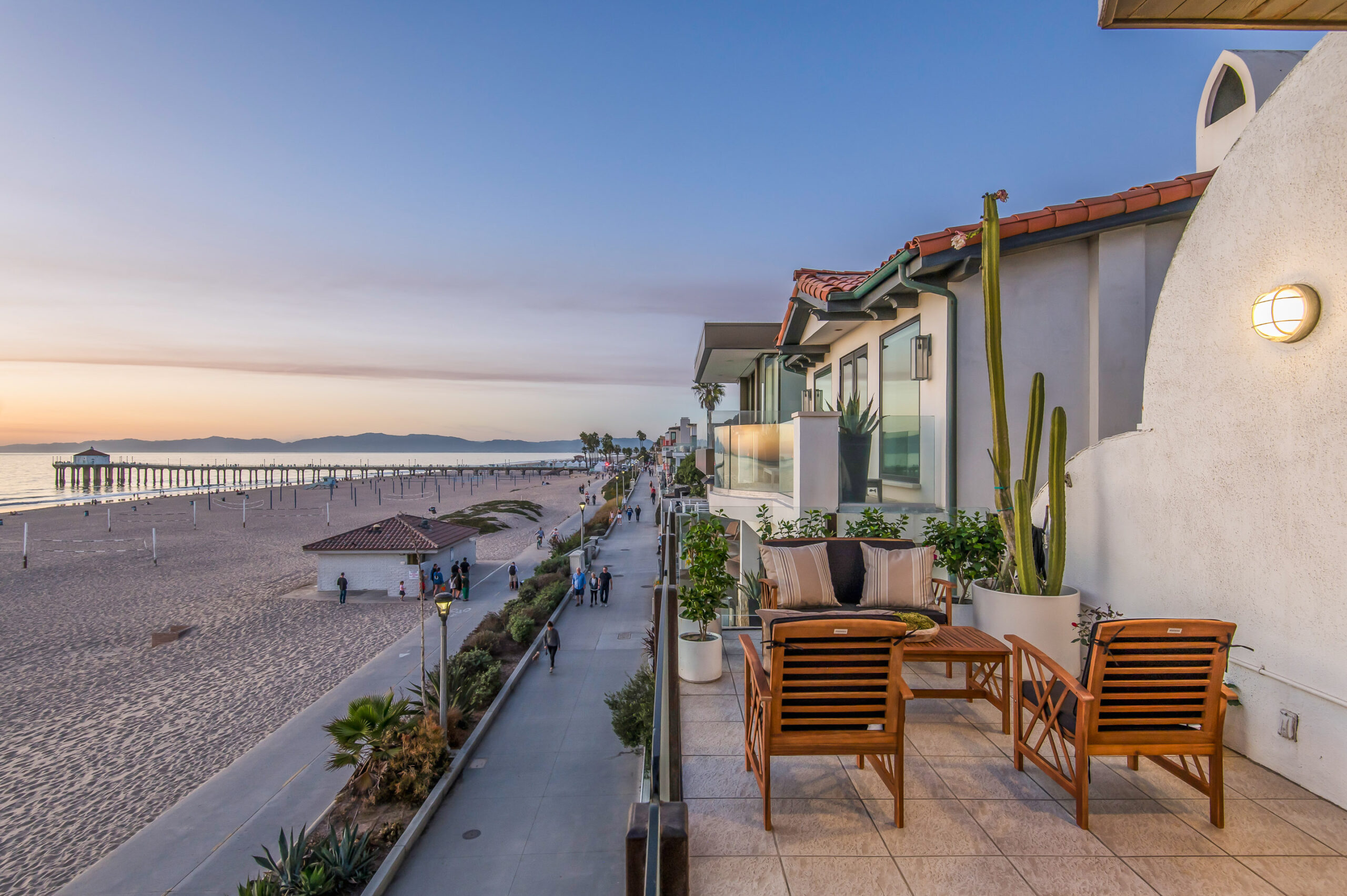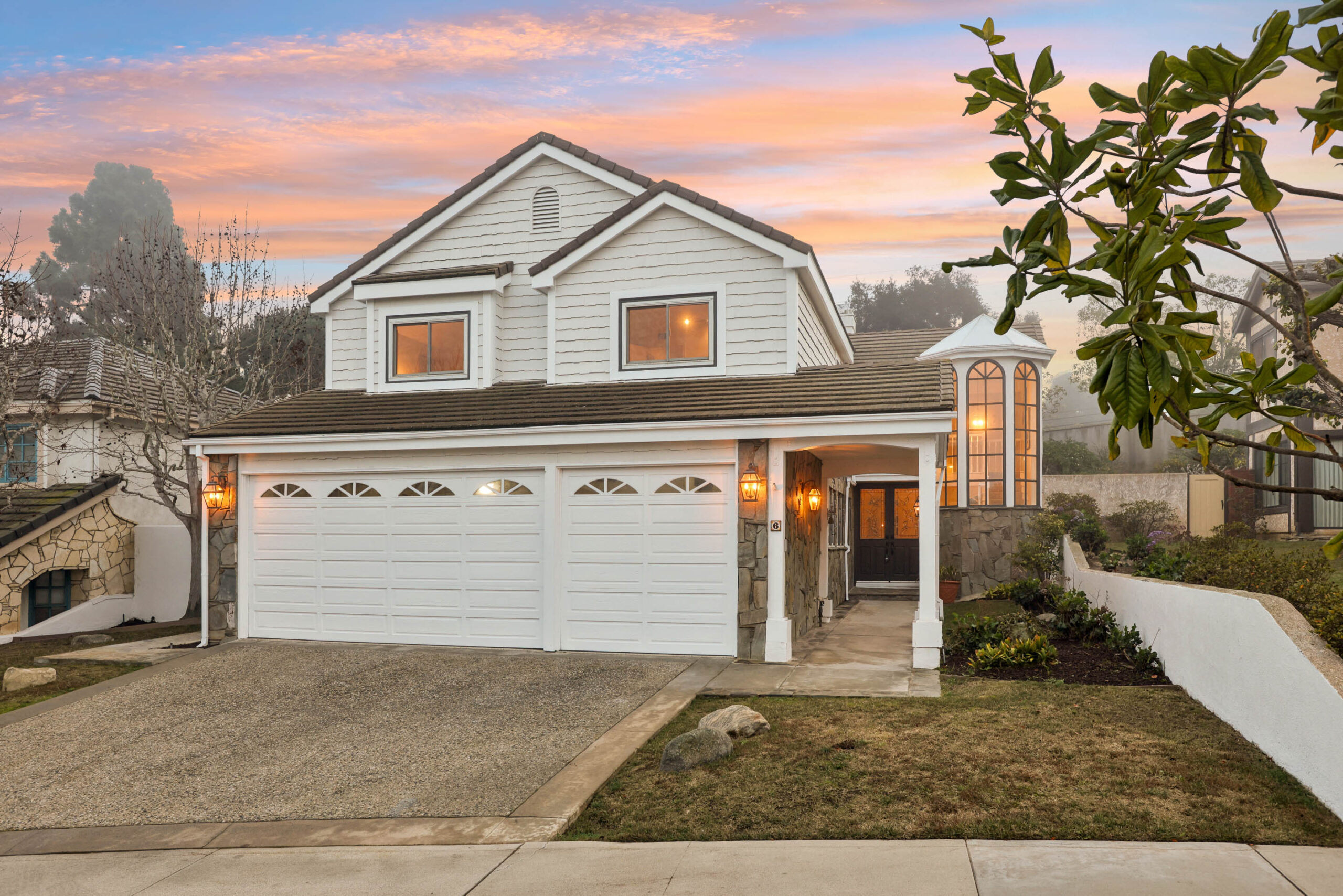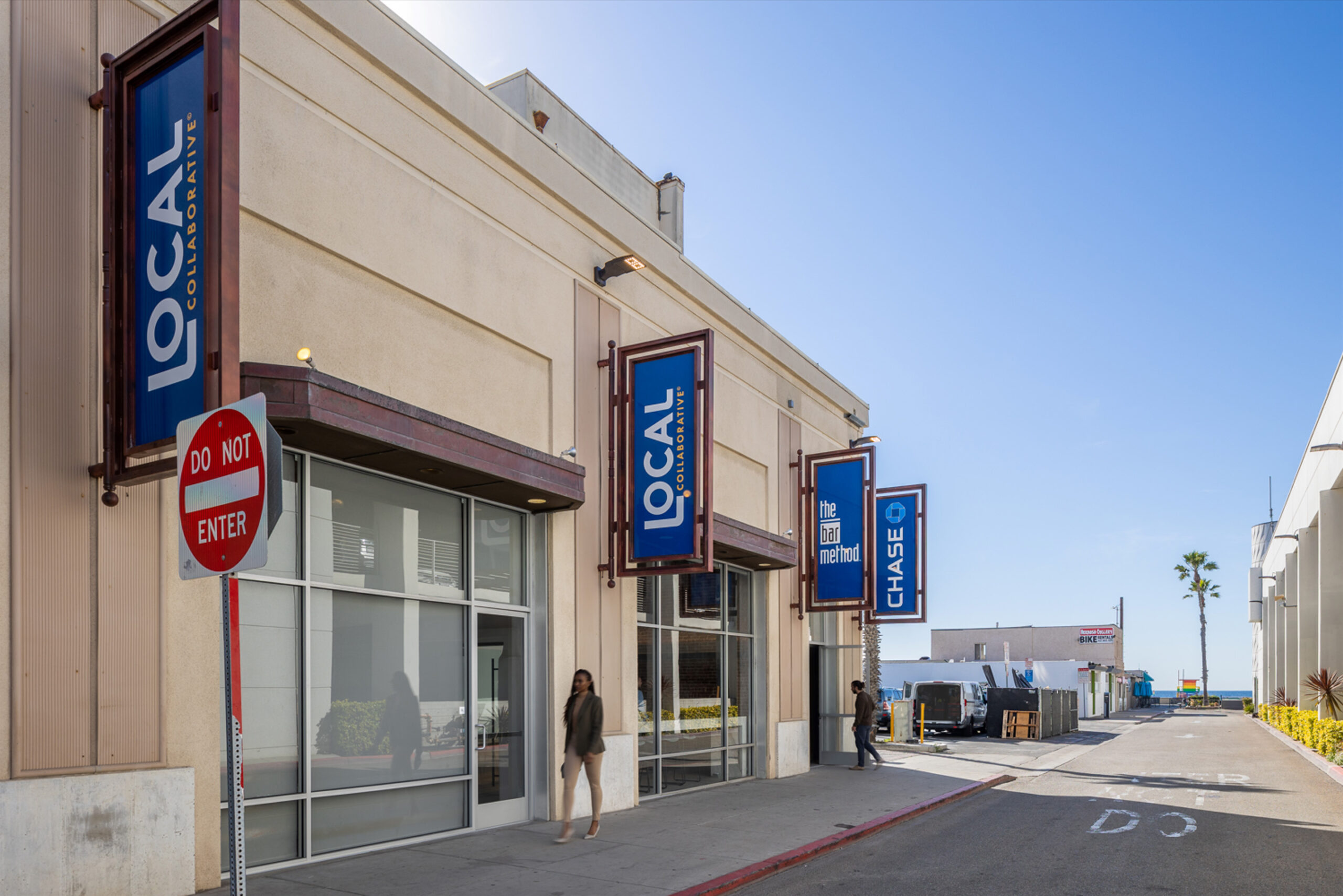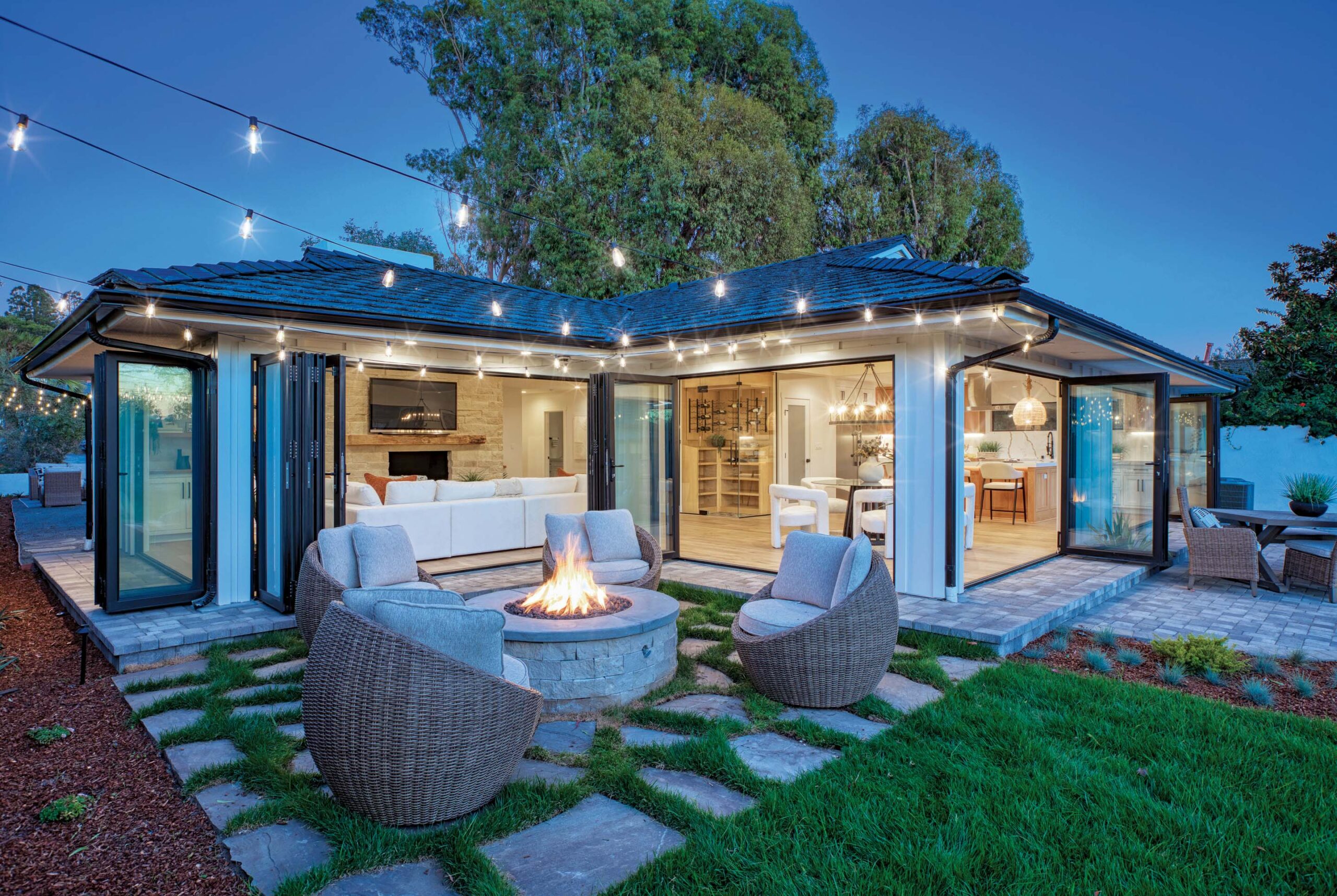Table of Contents
In this Episode
On this episode of Titans of Trade, host Constance Dunn sits down with acclaimed interior designer Annette English, whose 30-year career has shaped some of the most remarkable residences in Los Angeles and beyond. English shares her journey from arriving in LA as an unknown talent to becoming one of the city’s most sought-after designers, offering candid insights into building her prestigious firm and maintaining creative freshness across decades of work.
Annette opens up about her approach to managing global projects, fostering long-term client relationships, and leading a thriving design team. Her perspective on keeping an entrepreneurial spirit while scaling her business provides valuable lessons for creative professionals at any stage of their career.
Annette’s infectious optimism and pragmatic approach to challenges showcase why she’s become a trusted name among business leaders and Hollywood elite, designing everything from Beverly Hills chateaus to Parisian apartments. Main Takeaways Annette emphasizes the importance of continuous learning and growth in her design career. She believes that every project is unique and offers new opportunities for creativity. Collaboration and sharing resources within the design community are vital for success.
Annette’s early experiences in the restaurant industry shaped her approach to design. She values the relationships built with clients, often leading to lasting friendships. Personalizing design elements for clients adds a unique touch to each project. Maintaining a positive and fun work environment is essential for team dynamics. Hiring the right people involves assessing their fit within the team and their potential for growth.
Annette’s journey reflects the importance of resilience and persistence in achieving success. Los Angeles offers unparalleled opportunities for designers, attracting talent and clients alike.
Takeaways
- Annette emphasizes the importance of continuous learning and growth in her design career.
- She believes that every project is unique and offers new opportunities for creativity.
- Collaboration and sharing resources within the design community are vital for success.
- Annette’s early experiences in the restaurant industry shaped her approach to design.
- She values the relationships built with clients, often leading to lasting friendships.
- Personalizing design elements for clients adds a unique touch to each project.
- Maintaining a positive and fun work environment is essential for team dynamics.
- Hiring the right people involves assessing their fit within the team and their potential for growth.
- Annette’s journey reflects the importance of resilience and persistence in achieving success.
- Los Angeles offers unparalleled opportunities for designers, attracting talent and clients alike.
Quotes
- “I’m always looking to do impeccable work.”
- “There’s always space for learning and growing.”
- “I just love to see what others are doing.”
- “Say yes, and then figure it out on the other side.”
- “Failure is not an option.”
- “I want to have fun along the way.”
- “It’s about who am I going to be working with.”
- “I think excellence is a part of the equation.”
Follow Annette English
Website: https://annetteenglish.com
Instagram: https://www.instagram.com/annette_english/
LinkedIn: https://www.linkedin.com/in/annette-english-163a8210
Full Transcript
Constance (00:01.605)
Welcome to Titans of Trade. I’m your host, Constance Dunn, and today we welcome interior designer Annette English, who is responsible for remarkable residences in Los Angeles and far beyond. Welcome, Annette.
Annette (00:14.702)
Hi Constance, thank you so much for having me, it’s a privilege.
Constance (00:18.551)
Now, you’re somebody, I think it’s very exciting because you’ve been in business for a long time. You’re coming up on nearly 30 years. So you have this depth of knowledge and experience, which I think is really valuable. And I’d like to kind of, ultimately you’re an artist. What keeps it fresh and exciting for all of these years and all of these projects?
Annette (00:41.508)
You know, I think for us, it’s making sure that we never stick in one particular vernacular. So there are some designers, and I think it’s great, some firms that maybe focus just on Spanish modern, for example. We do it all. We do contemporary, traditional, transitional French chateaus. And we’re always looking to push the boundaries. And so 30 years in, it’s like,
I’m always looking to do impeccable work, raise the bar. You know, it’s one thing to sort of arrive at a certain level, but it’s a whole nother thing to stay there. So I’m constantly learning and growing and reaching out to new artisans and it keeps it fresh and alive and working with wonderful teams and new clients. Every project is different and unique. So every time is different and unique.
Constance (01:38.179)
you know, you bring up an interesting point because the idea of keeping the mind open and not just saying, I’m doing another French Chateau or I’m doing another modernist, you know, estate up in Bel Air, I’m going to learn here. So, you know, it’s like you’re saying you’re never you’ve never really arrived.
Annette (01:56.3)
Right, exactly. There’s always space for learning and growing. And I think that if I’m not learning and growing, I’m dying in a way, or I’m just stagnant. And that certainly is not who I am. And perhaps that’s part of our success. I’m not sure. But I just really want to be doing my best work. And I think my last project is
you know, a jumping off board to sort of create like the next best thing because I can only hopefully get better and better and better at my craft. I think you are a master at your craft at 10,000 hours, they say, but I just think, you know, you can only get better and try better and do better and try new things, step outside your comfort zone. So that appeals to me.
Constance (02:43.417)
Right.
Constance (02:46.841)
Yeah, and the level at which you work, I imagine that it is expected that with Annette English and her firm, you are going to know what’s coming down the road.
quite a few kilometers. And I’m curious about some kind of ways that you refresh the well and that you have the sense of what’s gonna be happening. Cause your projects, and we’ll talk about this, your projects sometimes are three to five years. So by the time that five years is up, it best look fresh. So just…
Annette (03:16.857)
See you.
No, exactly. Exactly. Actually, most of our projects are four to seven years. And it’s interesting because, you know, we grow so much as designers in that amount of time, all human beings, hopefully, if you’re open to growth and development, you’re always learning. So what I might have thought was interesting and the new hot thing four years ago,
we get to install it and I’m like, wow, you know, I get to see how far I’ve come in terms of my growth and development. But no matter what we do, it’s because we’re always looking for something that’s cutting edge, something that will stand the test of time. It’s unique. It speaks into the client’s vision. There’s a sense of timelessness.
that we always try to sort of emulate in our design. So even if it’s something that I chose or one of my team chose four years ago, given that it is relevant and timeless, I believe that it stands the test of time.
Constance (04:26.349)
I see. when you’re creative, like creatively as an individual, as a person, what are some things that inspire you? Okay.
Annette (04:37.816)
You’ve frozen.
Annette (04:56.908)
Hmm. Always a little glitch here and there.
Annette (05:06.756)
I know.
Annette (05:11.15)
Where are you based out of, Kieran?
Annette (05:20.062)
cool! Working remotely is great.
Constance (05:21.005)
Yeah, it’s very nice. So I’ll take that question again. It was just about, yeah.
Yeah, very odd. So personally, your well of creativity is fulfilled, probably maybe you have certain practices or, you know, walks out in the nature, whatever they do, does it for you as an artist, and if you’d like to share any of them.
Annette (05:50.404)
You know, I’m constantly involved in interior design, whether I’m at work or I’m at home and, you know, I’m on Instagram or I’m reading different design magazines. I found personally that Instagram is such a great tool because now we’re exposed to global design, global artisan that maybe five years ago I would have never stumbled across.
designers or architects in different countries where I get to see their work. I travel a tremendous amount, so there’s always new inspiration that comes in that way. But, you know, my husband quite often jokes with me because I’m…
when I’m at home or even if we’re traveling, it’s like in my downtime, I’m doing something with interior design because I’m just so hungry and I just, mean, it’s such a passion that I just love to see what others are doing. And I love to work with artisans in different countries and try to find ways to bring their work into the architecture of the homes that we’re doing. And so it’s always this newness. It’s always fresh because instead of being exposed to
15 artisans are now exposed to hundreds globally. So it’s really exciting.
Constance (07:08.693)
And your global work is really interesting because I saw Richard Landry is a collaborator you work with who just operates at the highest realm. And I am curious about just working globally and as an interior designer who is sourcing things and must.
then again, work with artisans. mean, it sounds overwhelming, but obviously you’ve been doing it and you’re doing it quite well. And if there’s anything you’d like to share, know, lessons that you’ve learned or things that you just know now that because you’re going to be going to France or maybe you’re going to be going to Dubai or in Paris and you’re going to like hit the ground running. So anything you’d like to share because it sounds daunting.
Annette (07:57.636)
I can get that. You know, sometimes at the beginning of a project, might be a little daunting. It’s not the right word for me because I’ve been doing it so long. But, you know, there’s always a level of newness like, OK, how do I make this work? So I’m someone who says, say yes, and then figure it out on the other side, which is a wonderful quote from Richard Branson. But it’s how I operate.
So let’s just say we’re doing a project in Paris. The best thing that I found is to just reach out to my peers and just ask, like, you know, do you have any sources you can share? You know, what worked for you, what didn’t? Because I’m a real believer in giving and sharing with others within my design community because we all have so many resources and we’re here to help one another.
So if I’m designing a home in a country that I’ve never been to, it’s like, need help. I need resources and I’m not shy to ask for it. But I’m also giving in that same way. It’s like, I just love to coach, help, give resources to others and sort of like have this give-give thing because that’s what we need to do as human beings, be there for one another.
Constance (09:24.047)
Absolutely. And just for people outside of the industry, is that something that has changed over time in your industry? Has that become more of a standard, I guess you could say?
Annette (09:37.248)
That’s an interesting question. Personally, think it’s something that I’ve, it’s innate within me. I’m from Australia, and not to say that Americans aren’t that way, but I’ve kind of always been that this way to sort of like give, reciprocate, share. And I think about the people that, excuse me, early in my career, sort of
came forth and were willing to give share their experience, expertise, hope, knowledge with me that made a profound impact on my life. And so I guess there’s that element of getting older and wanting to pay it forward because the people who took the time and were kind to me, it’s like I want to do the same.
Constance (10:29.271)
It’s wonderful to remember those moments, isn’t it? You know, back in the day when you really, someone, even for people that are not good at asking and reaching out, someone that sensed that, you know, and they really just, they’re busy, but they just are like, hey, let’s just grab lunch. And they just helped you.
Annette (10:31.008)
Annette (10:43.214)
Thank you.
Annette (10:49.73)
Yeah, exactly. I mean, it just those people I hold very close and dear in my heart. And, you know, I just myself took on an intern that had never worked in the industry before. She worked with us for nine months and I took her under my wing. She was sort of testing the waters to see whether this was a career path that she would like. And I went out of my way to help her because someone did the same for me.
And so it just feels really fulfilling to show up for someone in that way.
Constance (11:26.627)
Yeah, keep the wheel going, you know. You’ve been an entrepreneur for a long time before you hung out the shingle. You have done other things that I want to hear about some of them, just something that’s kind of just offbeat would maybe be unexpected or something that has really enriched your career in design.
Annette (11:28.772)
Yeah, exactly.
Annette (11:36.717)
Yes.
Annette (11:50.852)
Well, one of the things that I was lucky enough to do, it’s also I think part of the Australian culture is, you your parents tend to push you out the door before you go to college. So there’s that aspect of Aussie sort of traveling the world and sort of just having an experience of the world before you get into college. so you’re more open minded.
So I was lucky enough, I left home when I was 19. I traveled the world for eight years. I lived and traveled all over the place, then I worked too. And then when I was 28, I landed in San Francisco and I opened a restaurant and a bakery and I had 30 employees. was 28. I didn’t know what I was doing. I really had no clue what I was doing.
But it was through the design of the restaurant, which I did myself, on the side outside of the bakery hours, that had me realize at the age of 30, this is who I’m meant to be. I’m meant to be an interior designer because when we opened the restaurant, we got a lot of attention and acclaim for the food because we’re organic, which was a big deal back in the 90s.
And we got just as much attention for the interiors as we did for the food and the customer service. And so I kind of stumbled into my career by designing a restaurant at 28 and kind of a do it yourself type thing, but it was so much fun and the end result was lovely. it’s something that I stumbled into and, you know, there’s always, I think.
There’s always a path, there’s always a reason why things happen. We might not know in the moment but once you have some objectivity and get on the other side you’re like, now I get it, that’s why that happened, you know.
Constance (13:52.767)
a good attitude. And back in the day, you you created something in a major market, you know, that wasn’t your home, you know, and you have 30 employees, again, you’re in a major market doing a restaurant.
Annette (13:54.318)
Yeah.
Constance (14:10.735)
back then, was it your nature to get these challenges? They could be very scary, or they could be very motivating. You know, it’s all how people are built and what their attitude is. I have a guess on how you might have approached it, but I want to hear from you just back in being that age and just being in San Francisco.
Annette (14:25.784)
Exactly.
Annette (14:33.268)
Yeah, it’s a good question. I think, you know, I’ve always been a doer, but it wasn’t until I left home and was traveling the world and learned to be resilient, learned to sort of trust my instincts. I really sort of flew by the seat of my pants for the longest time in those eight years of traveling and just
showed up and was a yes to life. I would say yes to many things. And so doing the restaurant and having that many employees and really sort of being out of my depth because I was. And I was younger, so I didn’t have the wisdom. I didn’t have the experience that I hold now. So I think there was a lot of learning. There was a lot of…
being uncomfortable because it was new and I didn’t have any answers and I had to sort of rely on myself. But I really think or I’ve learned that growth and development happens in the uncomfortable moments in life. so that was, I always tell people, know, I arrived in San Francisco, a young girl and I left as a woman because of those, you know, those 10 years, it’s just.
I didn’t go to business school. I learned how to run a business. learned, you know, so I think that I’m just someone who just throws himself in and figures it out as they go. And then that experience sort of led to interior design and then started that whole chapter. And as I’ve gotten that 30 years of experience under my belt, I am very confident with what I do because I’m, you know, I’ve just
accumulated that experience. So, I’m not I’m not a nervous Nellie. I’m I’m
Annette (16:30.774)
excited by what I do. I’m excited to work with really, really great teams and clients and my staff are incredible. It’s not just about me, it takes a village and I have an incredible team. So it’s this real wonderful sort of joint effort that we get to create these incredible homes for amazing people that are grateful. so I just, feel lucky and count my blessings every day.
Constance (16:56.301)
Yeah, and it sounds like it’s a nice place to be at, you know, where you really know the lay of the land, you know, you’re not going to be really surprised by much at this juncture. And you know, you could confidently have your palate and just, you know, move and groove. It sounds good.
Annette (17:13.42)
Yeah, yeah. that like like anything, I think it’s like, you know, you wax on wax off and, know, through putting in those 28 years or or anybody in a career when you spend the time and hone your craft and then become, you know, an expert in it. And, you know, it’s just it’s part of the territory that comes with all that time and making mistakes and falling down and picking yourself up and dusting yourself off. I mean,
I’ve had some scary times like everybody during the downturn in 08, 09, like, my gosh, how do we survive that? How do we get through that? And that just once again calls on that sort of inner searching, that resilience, that failure is not an option.
And I actually read a quote the other day by Lily Collins, the actress, Emily in Paris, and she said, no, no means not right now. And so it’s like, you know, there have been a lot of no’s also in my career where I just kept on knocking on the door like six months later, knocking on the door and, you know, persistence. And I think two key words for
something that’s really helped me is just naturally is being persistent and having grit.
Annette (18:46.485)
they’ve really you know helped me get to where I am because I don’t know we only have one life you gotta go for it and live big and and that’s how I kind of yes that’s the recipe that I’ve lived by.
Constance (19:03.383)
And it’s a good point because I am even thinking, okay, you’re very successful, you’re at a certain level. And I’m like, she’s just always been at that level. It’s like, no, she rolled into town, probably knowing no one and built it brick by brick. It’s funny how that the success the illusion, that’s really easy to, to take on. I’m like, I’m like, you had to knock on doors. I’m like, so I’m curious about
like big breaks that you’d like to share that in your mind are it’s like a benchmark. You’re like, okay, now I’m playing in this level. Now I’m in the NBA. Now I’m major league or you know, just something that you know, in your mind are are really significant kind of benchmarks.
Annette (19:41.07)
bright.
Annette (19:50.18)
Mm.
Absolutely, I have a couple. would say one of the biggest ones was about 15, 16 years ago, I was awarded out of 10 designers, I was awarded a project to do for Mark Wahlberg. So it was a ground up home for him, ground up construction. was a five year project.
five year project, was 36,000 square feet. And, you know, was a huge project in it. And as designers who collaborate with architects, this was a Richard Landry project. You know, we…
are creating renderings were brought on at the very beginning. We’re selecting the appliances, the plumbing, the finishes. We’re working in tandem with the architect to do the architectural drawings. We’re selecting all the furniture, the fabrics, the decorative lighting. We’re on site. We’re communicating. We’re project managing. We’re managing budgets. We’re sending out schedules where, you know, there was just so much. And, you know, it was definitely was a career.
changer for me in terms of just my own level of confidence, but sort of like working in that league. And also it’s interesting because it’s like I realized that, okay, it’s not about size at all, but you know, okay, if we can do a 36,000 square foot house, what’s the difference between doing that or a 70,000 square foot house or a boutique hotel or all these things, but.
Annette (21:35.81)
just learning to project manage all of that and have it be seamless. And I would say at the end of that five year project, you know, not only was the client thrilled, but you know, there was probably a margin of like 3 % of error. And in projects like that, it’s like, there’s hundreds of thousands of decisions that are made and there’s hundreds of players, team players. So, it was a great learning.
tool and a career changer for sure.
Constance (22:07.149)
Yeah, no doubt. You know, one of the things I noticed about your work is that there’s this very kind of unmistakably kind of keen sophistication and luxuriousness, know, kind of no matter. But then you’re also integrating the clients, individual aesthetic aspects of their lives, yet.
Annette (22:31.684)
Thanks.
Constance (22:32.963)
the way you work, must be done in a very, very sophisticated way.
Tell me about how you do that.
Annette (22:45.54)
So we spend a tremendous amount of time with our clients up front, know, sort of shopping with them, going through a bazillion images with them, getting to know them, spending time together. So, and we, we sort of become friends and I guess, you know, I’m, I consider myself an extrovert and I,
can be very silly. And, you I think that helps like with clients, let their guards down. so we are, I’m a good navigator of getting to know what people want and I’m a good listener. So we might suggest things like we have a project in Florida right now where this client wanted some personal aspects, you know, thrown into the architecture. So we thought, well, why don’t we take
you know, the husband and wife’s like initials and then the children’s initials and then somehow carve that into the limestone, the balustrades that are going on the exterior of the house. So and sort of in an abstract way. So not everybody’s going to like walk down the street and say, there’s an A and an E or whatever, but it’s something that’s very subtle, but it’s meaningful for the client. And, you know, then they have a story to share.
with their friends like, look at this special feature that was created just for us. It’s personalized, it’s unique. For the same client, he wants some really, really special things in his home. So we’ve created a speakeasy behind a big bookshelf of a big wall of bookshelves that’s very unexpected. No one would know that the speakeasy is there. Lots of hidden passages.
And those are all special requests from them. Like, okay, how do we make that work? Cause that’s something that he would like. And then that’s a great challenge for us to explore. We have another client in LA right now where we’re installing the project in the next several months. And this has been a six year project, the greatest clients ever. So lucky have the best clients. And this client has just requested some really, really, really unique things that
Annette (25:05.762)
One of them is using this particular light bulb that the interior light bulbs mimic the lighting from outside. So if it’s sunny outside, it brings the same light and temperature inside. it means that the lighting is affecting your mood in a positive way. It’s a really sort of like healthy benefit. He wants to…
you know, be able to like control the lighting and sort of like if it’s Halloween, change all the colors to like orange, green, red or Christmas, change all the lighting to this and that. Lots of different unique things that we’ll never do again, but it’s really fun to personalize these homes for our clients and and then also explore for us. It’s like, well, what does that mean? Like, what does it look like? OK, let’s have to let’s do some research and find out. So that’s where the learning.
the never-ending learning comes into.
Constance (26:07.087)
And having a sense of a person beyond what you read about them or what they even tell you, I imagine. Okay.
Annette (26:14.724)
Hmm, absolutely. Well, as designers, I would say that as a team, we have the most intimate relationship with our clients because, you know, we’re having these deep conversations about what’s important to them. And so you really do get to know them.
pretty well and a lot of my clients, you even after like five, six years, it’s like go on to become dear friends that, you know, I’ll have dinner with three or four times a year and and for me that is sort of the biggest accolade is that okay, you’ve gone through five years of really intense time and working together and yet you’re still friends on the other side when when so many issues can come up or how do you put out fires and
And how do you take responsibility if there’s a mistake? So it’s like, it’s taking responsibility, being accountable. And if we make mistakes, it’s like we try to write that versus, no, it was him or it was her. So I think it’s like having that integrity that really matters at the end of the day.
Constance (27:26.797)
Right. How do you keep it light? And I imagine you’re known as someone who, in addition to being very good at what they do, is also someone who is really great to work with. I imagine among your clients, people talk and people refer people, this person, this firm, she’s great. And for you, you have a lot, you have a team, I’d like to ask you about that, but.
you’re doing really monumental projects. You have a lot of people, you have a business, you’re an artist. And so yeah, how do you keep the lightness? How do you keep the net, you know, the essence of who you are and keeping it, you know, all that, you know, the appeal and all of that, that you really have to be operating as.
Annette (28:18.684)
For me, it’s easy because it’s fundamental to who I am. know, I, a lot of my peers would say that, you know, I’m, I’m fun to work with. My team would say that I’m fun to work with. think my clients think that I’m fun to work with. And, you know, it’s when you’re doing these big projects, it’s like,
you want to have fun along the way. And so I’m at a stage in my career, and I’ve probably been here for a while, where, you know, it’s not always necessarily about the project. It’s about who am I going to be working with for the next five years? Is it a great client? Is it a great team? Is it, you know, all of these things is not just, it’s this really showy, fantastical house. like,
we’re getting married for the next five years. So I want to have fun. I want them to have fun. I want to take the stress off the client’s shoulders. I want our team to have fun with who they’re working with. So I don’t know. It’s like I’m very playful by nature. And
I think that disarms a lot of clients and makes it easy to work with. just, I have a young spirit, I guess, and just who I am.
Constance (29:42.137)
That’s great. That’s great that you were able to maintain that, you know, amidst a lot of responsibility. Right. Yeah.
Annette (29:49.184)
Not always, not 100%. There are stressful days. There are stressful days where, but I also, you know what, I do a lot of like inner work, growth and development. So it’s like, okay, and I tell this to my team, even if we have a difficult client, which is once every one moon, it’s like, okay, what are they meant to teach us?
What are we here to learn? They came into our lives for a reason. So how do we turn that around and like look at the lessons that are here in front of us versus complaining, you know, all that business. It’s just like, we only have one life and we have to make it great. And, and also to like stay at this level or stay at this level or keep on growing. It’s we have to deliver.
a level of service that is impeccable. So it’s not just the deliverables that we provide, but it’s like, you know, who we are as people. have a lot of vendors tell me like, my gosh, your team is just so great, like on the phone and they’re so lovely to work with. And so, you know, one of the things that I’ve been telling my team for a long time, it’s like, okay, just let’s pretend we’re
Gucci, for example, and we had stores all over the world. Okay. You know, our store in Tokyo has to deliver the exact same deliverables that, you know, if you went to Gucci on Rodeo Drive or you went to Gucci in, on Madison Avenue, it’s like, you have the same experience. get the same level of service, the same quality, product, the same quality, everything.
I think excellence is a part of the equation to work at this level.
Constance (31:40.557)
Yeah, and that makes sense when you think about your longevity, what you’re saying how, instead of just like bracing yourself and grinning and bearing it and just smiling, even though you don’t feel like it, there’s an attitude switch, which almost welcomes kind of an adverse or not.
know, tiptoeing through the tool up situation, you know, that makes a lot of sense. So your team is sizable. You have quite, you know, you have this, this team and I’m curious when you are thinking of bringing someone aboard, what are one or two characteristics that are like a must have that you really like look for?
Annette (32:18.532)
Well, one of the things that we do actually is we have potential new hires take something that’s called a disk assessment. And a disk assessment sort of breaks down into four quadrants of a person’s personality. One is drive, one is influence, one is clarity, one is support. And we sort of arrange our teams based on like, okay, this team is heavy in drive, but they don’t have any clarity. So we put
clarity on that level. I think mostly it’s, you know, when I meet someone, for all of us, it’s sort of intuitive. You get a sense of somebody. So I think they have to be a good fit with the team. I really do my homework in…
One of the things we do is we have potential hires do an exercise where they’ll come in, we’ll give them a floor plan, a blank floor plan. They’ll have to do a furniture layout for us. They’ll pull images of furniture and decorative lighting off the internet. And then we have like a big library here of like fabrics and stones and materials and.
we’ll ask them to put a presentation together for us in the course of three or four hours, which is a lot to ask of someone. you you get to sort of, I mean, no one’s ever said no. And it’s something that I had to do when I moved to LA and I was looking for a job before I started my own firm. But that is also a great way to see someone see their potential because you can talk and talk and talk.
But then once they do a presentation, you can see, you know, the level of sophistication isn’t quite there yet, or are they open to growing? Are they open to being groomed? So there’s a lot of different things that we do to sort of try to test run and try to make good decisions about hires. Not always 100 % spot on, but I love mentoring people and coaching people if they’re open.
Annette (34:30.464)
So, but yeah, we do add due diligence in hiring people because it takes a lot of effort and money and time to train someone and you train someone for two years and then if they leave, it’s like you have to start from scratch. for me, one of the things I admire in CEOs or founders of companies is the longevity of their employees. If they can say, yes, this one’s
person’s been with me for 17 years, 15 years, 12 years. mean, that as an entrepreneur speaks volumes to me. They’re doing something right that these people want to stay around, know, they’re absolutely doing something right.
Constance (35:15.425)
And your team is like a dozen or 15 people that you have at this point.
Annette (35:21.22)
We’re 15 and then we outsource as well. So up to 18.
Constance (35:28.931)
What was it like when you went from just a net to then just starting to add? You’re like, have to add somebody and then adding more and more.
Annette (35:38.512)
well, I think I got my fill of that when I was 28 and I had the restaurant, the bakery, and I had 30 employees. That was really my bootcamp into, being a boss and having employees. so by the time that I got into this second career, it wasn’t as, as difficult, but I, I did learn that. I don’t think I ever really want to grow beyond sort of like.
18 people because then I find that life becomes more about human resources and not about design or not being able to spend enough time with my employees or my team or my clients. So 18 is manageable, but you never say never because I’m always open to like any possibilities in the future. I have an incredible business partner, Andrea Popkin, who’s been with me for
11 years and she’s tremendous. I’ve just got a great, great team. I’m really blessed.
Constance (36:44.067)
Yeah, and Andrea, having her like, she then you decided this is like a partnership role, is that correct? So it’s…
Annette (36:51.542)
Yeah, you know, she is one of the most loyal people I’ve ever met. She’s a very, very talented designer. She’s incredibly organized and great at project management. She’s just, we’re kind of like soul sisters, I think in a past life. We have so many similarities. She’s a farm girl from Kansas, this small town. I’m a farm girl from Perth in Western Australia. We just have like so many.
things in common, but her loyalty and her talent really shone brightly for me. And I just knew, if I wanted to keep her, it’s like I needed to give her some skin in the game. And it was the best decision I ever made.
Constance (37:37.379)
That’s great. And speaking of longevity, it’s been like, yeah, 11 years now, right? Yeah. You traveled the world, you were going about experiencing a lot of different places. You landed in LA at some point and was just like, yeah, this is good. What is it about Los Angeles that really managed to kind of keep you there?
Annette (37:41.362)
Yeah, yeah.
Annette (38:06.975)
Opportunity, opportunity plus great weather. So I lived in San Francisco for 10 years and while that was tremendous and in a way my heart is still there to a degree, there would never have been the type of opportunity that we have down here in LA. So I would say opportunity, the weather,
are the two primary things. And I think the weather sort of reminds me of home a little bit. But yeah, just the abundance of opportunity. And I think, you know, no matter what happens in LA with either a downturn or, you know,
any sort of major hiccup that might happen with the economy or the industry or whatever, there’s just, you know, a tremendous amount of opportunity, no matter what. It’s like there’s people here with buying power that, you know, might not be affected by any of those glitches that happen within the economy, where say maybe in Colorado or Kansas or Nebraska, they might be, but here it’s just, it’s very,
plentiful. So I feel that that has been one of the reasons that I’ve attracted me and why I’ve stayed and I’ve just got a tremendous group of peers throughout Los Angeles, just amazing talented peers. That’s another thing, like the talent here is unbelievable. And I might add too, I was talking to a couple of
design peers in New York a couple of years ago. I was saying, because I was going to New York shopping for a client and all of my peers in New York say, you know, LA hands down has the best shopping in the world, in the country. So. I mean, yes, I could go to Paris and go to all these wonderful places, which, you know.
Annette (40:17.226)
is terrific, but in Los Angeles we just have everything at our fingertips. There’s something about California. We even have clients abroad who are looking for Californian designers because I believe that they think we’re exposed to the greatest and the best. I’m not exactly sure why that is. mean, we in my office certainly are and then the level of the caliber of people and
team members and peers that I work with also are exposed. But so one of our clients that I’m not going to say what state, but they’re in a different state in the States. And they’re like, we just knew we couldn’t get the quality of design that locally that we could source from Los Angeles. So they hired an architect and a design firm from LA.
Constance (41:14.051)
Yeah, there’s a certain freshness and optimism to it’s hard to describe from where it comes from. But it’s almost like the day is never going to be that bad. It’s like beautiful out. It’s like how bad can it be? Okay.
Annette (41:18.349)
Yeah.
Annette (41:21.763)
Right.
Annette (41:32.312)
Yeah, well I’ve always thought that you know sort of like that the underbelly the currency of Los Angeles with the movie industry even though that’s changing but with the movie industry it’s like it’s always been creativity you know that’s kind of like the river that flows through Los Angeles is whether you’re on film or design or graphic design or tv or it’s creativity it’s creativity and it’s just
Constance (41:43.012)
Yeah.
Annette (42:00.482)
I don’t know, maybe by osmosis you sort of like absorb that, but I think like anything is possible here. And certainly being a foreigner, I feel like, you know, the American dream has been achievable for me twice. And so really very grateful for that.
Constance (42:21.091)
Yeah, I understand. It’s almost like anything can happen in Los Angeles. it’s fascinating that you arrived by yourself. You weren’t connected. You weren’t the daughter of a studio boss or an actress. You just, yeah.
Annette (42:35.044)
Yes, that’s very true. And I have peers in Australia who just would never get this level of opportunity. I have some peers in Sydney who are doing extraordinary work, but maybe not sort of the ground up.
size that we do here. know in New York, this kind of surprised me when an editor told me maybe about six years ago, she was like, you know, you think about designers in New York or designers in Los Angeles, it’s like you’re very different. You have very different opportunities. And I said, what do you mean? And she said, well, you know, a lot of designers in New York are just doing these incredible renovations and these beautiful, like old brownstones or whatever it may be.
Maybe they get to do ground up construction if a client has a second home in the Hamptons or whatever. Whereas here we get to create blank slates all the time. And I’d never thought about it that way.
Constance (43:44.385)
It makes sense. And at English, we thank you so much for sharing your insights and your expertise with us. Thank you so much.
Annette (43:52.58)
thank you so much for having me. It’s been a true pleasure.
